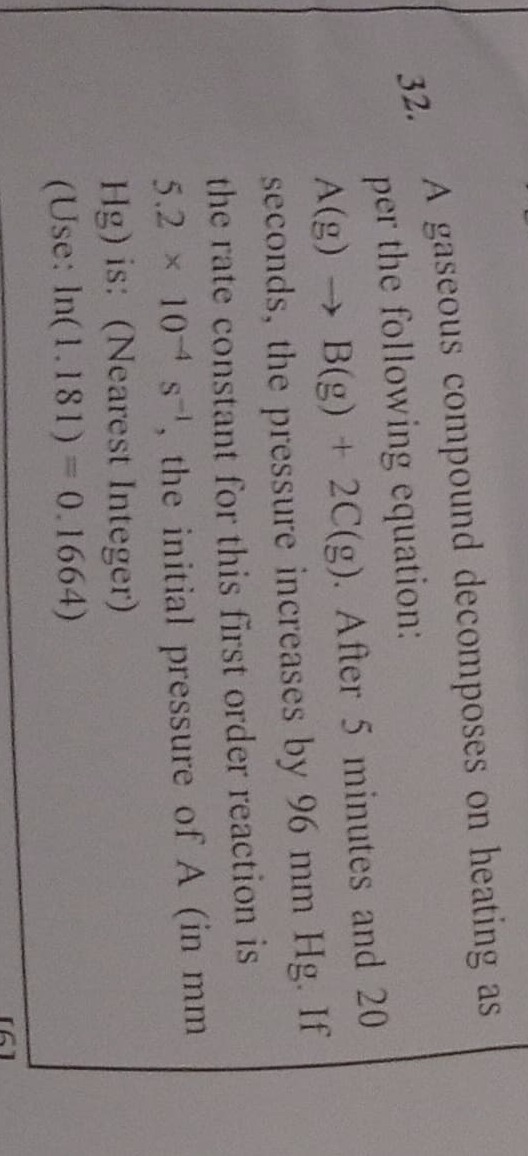Question
Question: A gaseous compound decomposes on heating as per the following equation: $A(g) \rightarrow B(g) + 2C...
A gaseous compound decomposes on heating as per the following equation:
A(g)→B(g)+2C(g). After 5 minutes and 20 seconds, the pressure increases by 96 mm Hg. If the rate constant for this first order reaction is 5.2 x 10−4s−1, the initial pressure of A (in mm Hg) is: (Nearest Integer)
(Use: In(1.181) = 0.1664)

313
Solution
The decomposition reaction is given by:
A(g)→B(g)+2C(g)
Let P0 be the initial pressure of A. At time t, let x be the pressure of A that has decomposed. The pressures of the components at time t will be:
Pressure of A = PA=P0−x
Pressure of B = PB=x
Pressure of C = PC=2x
The total pressure at time t, Pt, is the sum of the partial pressures:
Pt=PA+PB+PC=(P0−x)+x+2x=P0+2x
The increase in pressure is given as 96 mm Hg.
Increase in pressure = Pt−P0=(P0+2x)−P0=2x
Given, 2x=96 mm Hg
So, x=296=48 mm Hg
The pressure of A remaining at time t is PA=P0−x=P0−48 mm Hg.
The time given is 5 minutes and 20 seconds. Convert this to seconds:
t=(5×60) s+20 s=300 s+20 s=320 s
The reaction is a first-order reaction, and the rate constant (k) is given as 5.2×10−4 s−1.
For a first-order reaction, the integrated rate law in terms of pressure is:
k=t1ln(PAP0)
Substitute the known values into the equation:
5.2×10−4 s−1=320 s1ln(P0−48P0)
Rearrange the equation to solve for the logarithmic term:
ln(P0−48P0)=(5.2×10−4 s−1)×(320 s)
ln(P0−48P0)=0.1664
We are given that ln(1.181)=0.1664.
Therefore, we can equate the terms:
P0−48P0=1.181
Now, solve for P0:
P0=1.181(P0−48)
P0=1.181P0−(1.181×48)
P0=1.181P0−56.688
56.688=1.181P0−P0
56.688=(1.181−1)P0
56.688=0.181P0
P0=0.18156.688
P0≈313.193
Rounding to the nearest integer, the initial pressure of A is 313 mm Hg.
